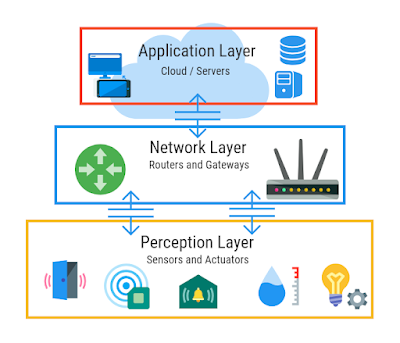The Internet of Things (IoT) is a term used to describe a network of devices and objects that are connected to the internet and are able to collect, share, and use data to improve the way we live, work and play. IoT technology is becoming increasingly popular and has the potential to transform a wide range of industries including healthcare, manufacturing, transportation, and agriculture.
IoT devices are typically equipped with sensors, processors, and communication hardware that allow them to collect and share data with other devices and systems. This data can be analyzed and used to improve efficiency, reduce costs, and create new products and services. For example, in the healthcare industry, IoT devices can be used to monitor patient health remotely, allowing doctors to detect and treat illnesses earlier and more effectively.
One of the key benefits of IoT technology is its ability to create a more connected world. By connecting devices and systems, IoT technology can help us to better understand and manage the world around us. For example, in agriculture, IoT devices can be used to monitor soil moisture levels, temperature, and other environmental factors, allowing farmers to optimize crop yields and reduce water usage.
The architecture of the Internet of Things (IoT) is complex and varies depending on the specific application or use case. However, there are some common elements that can be found in most IoT architectures.
At a high level, the IoT architecture typically consists of four layers: the perception layer, the network layer, the middleware layer, and the application layer.
Perception Layer: This layer consists of the physical devices that collect data from the environment, such as sensors, actuators, and cameras. These devices are responsible for sensing and measuring physical quantities, such as temperature, pressure, and motion. They then convert this data into a digital format that can be processed by other layers in the architecture.
Network Layer: This layer provides the connectivity between the perception layer and the rest of the architecture. It includes protocols and technologies that enable devices to communicate with each other and with cloud-based services. This layer can be divided into three sub-layers: the access layer, the transport layer, and the network layer. The access layer provides the physical connectivity between devices and the network, such as Wi-Fi or cellular networks. The transport layer ensures reliable delivery of data between devices, while the network layer manages the routing of data between devices and cloud-based services.
Middleware Layer: This layer provides the software infrastructure that enables devices to connect with each other and with cloud-based services. It includes a variety of technologies such as messaging protocols, data storage, and data analysis tools. The middleware layer is responsible for managing the flow of data between the perception layer and the application layer.
Application Layer: This layer consists of the applications and services that make use of the data collected by the IoT devices. This layer can include a wide range of applications, from simple dashboards that provide real-time data visualization to complex machine learning algorithms that analyze data to predict future events or optimize system performance.
However, the increased connectivity that IoT technology provides also presents new challenges. Security and privacy concerns are among the top issues facing IoT technology today. IoT devices are often connected to the internet without proper security measures in place, leaving them vulnerable to hacking and cyberattacks. This can lead to serious consequences such as data breaches and loss of sensitive information.
To address these challenges, industry leaders and policymakers are working to develop standards and regulations for IoT technology. This includes creating guidelines for security and privacy best practices, as well as developing frameworks for interoperability and data exchange between different IoT systems.
As the IoT continues to evolve, it is important that we consider the potential benefits and risks of this technology. By working together to address these challenges, we can ensure that IoT technology is used in a safe, secure, and responsible manner.
IoT technology is already being used in a wide range of industries, and its applications are expected to continue expanding. In the transportation industry, IoT devices can be used to monitor and optimize traffic flow, reduce congestion, and improve safety on the roads. In the manufacturing industry, IoT technology can be used to monitor machines and equipment, detect and predict maintenance issues, and improve supply chain management.
IoT technology is also being used to create new products and services. For example, smart homes use IoT devices to control lighting, temperature, and other household appliances, while wearable devices use IoT technology to track fitness and health data. Smart cities are using IoT devices to monitor energy usage, reduce waste, and improve public services.
As the number of IoT devices continues to grow, it is important to consider the environmental impact of this technology. The production and disposal of electronic devices can have a significant impact on the environment, and the increased energy consumption associated with IoT devices can contribute to climate change. To address these concerns, manufacturers are working to create more energy-efficient devices and to develop recycling programs for electronic waste.
In conclusion, the Internet of Things has the potential to transform the way we live, work, and play. By connecting devices and systems, IoT technology can help us to better understand and manage the world around us. However, security and privacy concerns must be addressed to ensure that this technology is used in a safe and responsible manner. As the IoT continues to evolve, it is important that we remain vigilant and work together to create a more connected and sustainable world.



